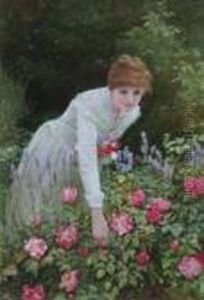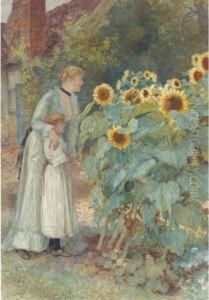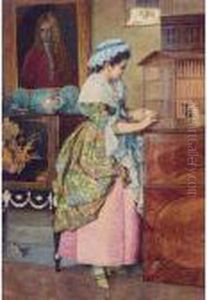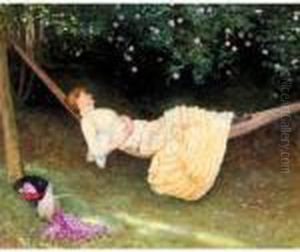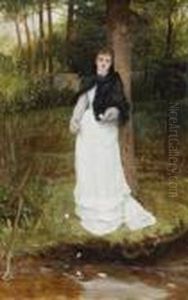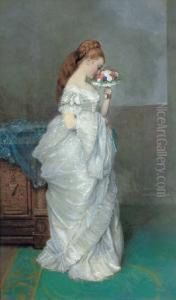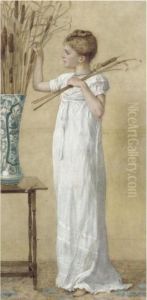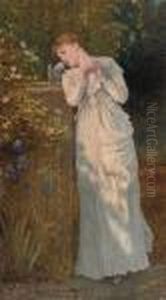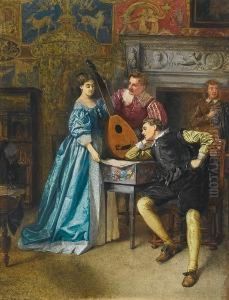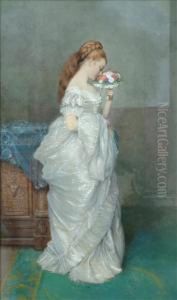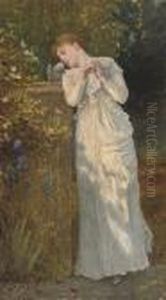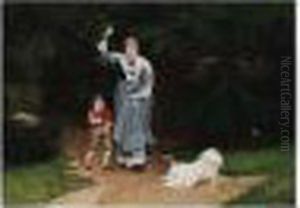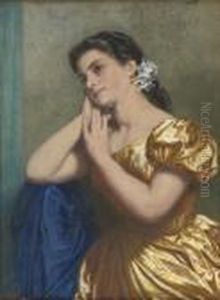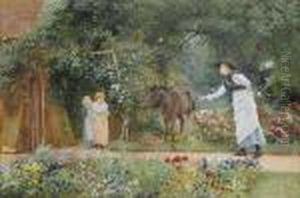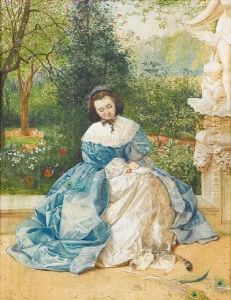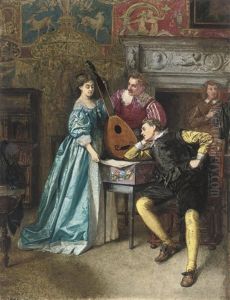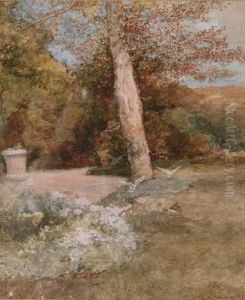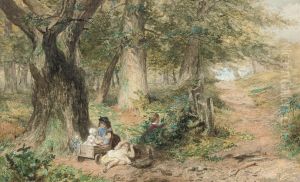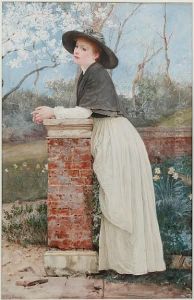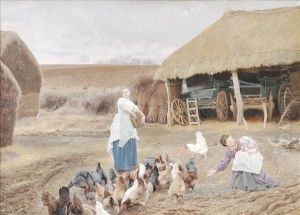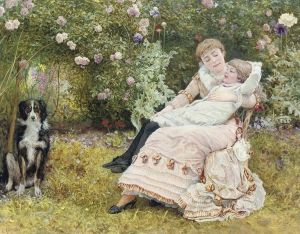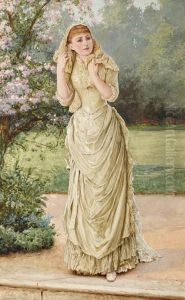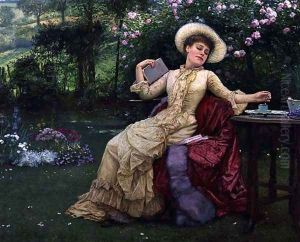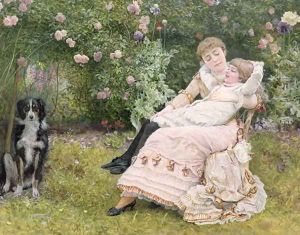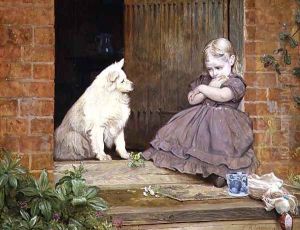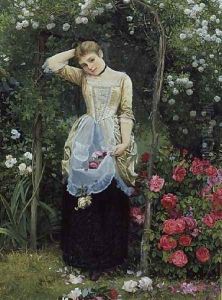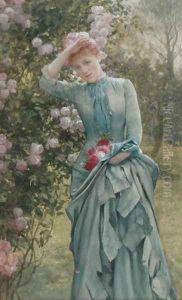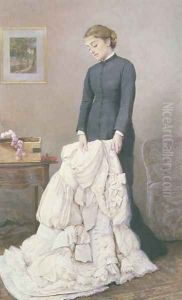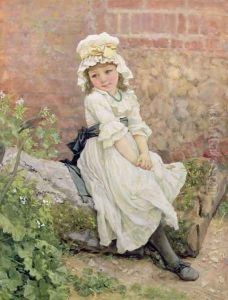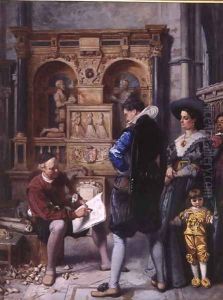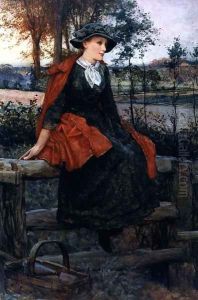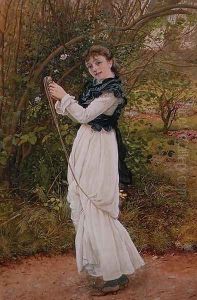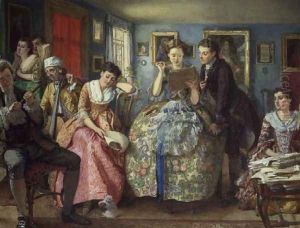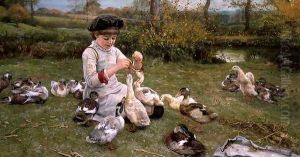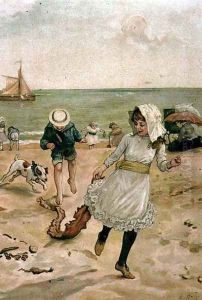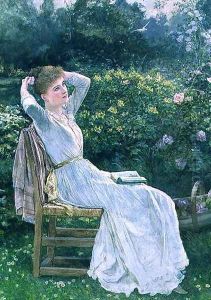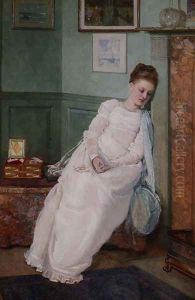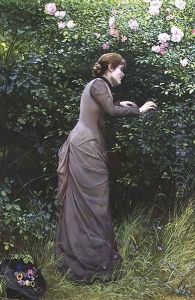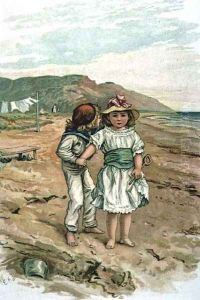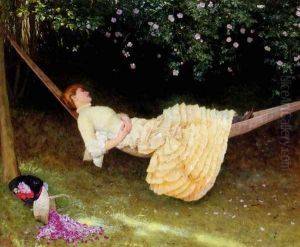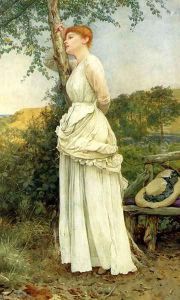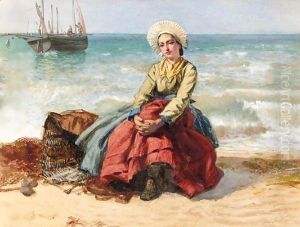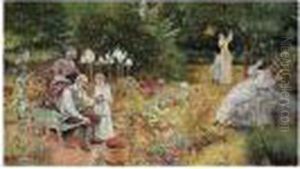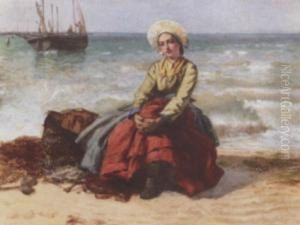Edward Killingworth Johnson Paintings
Edward Killingworth Johnson was an English painter and illustrator born on July 26, 1825, in Stratford, Essex. He was known for his genre scenes and watercolors, which often depicted charming scenes of Victorian life, such as children playing, domestic interiors, and garden scenes.
Johnson showed an early interest in art and pursued his passion despite the initial lack of formal training. He eventually studied at the Royal Academy Schools after initially being apprenticed to a wood engraver. His engravings and illustrations began to appear in various publications, including the 'Illustrated London News,' which was a prominent outlet for visual artists in the 19th century.
During his career, Johnson developed a distinctive style characterized by a delicate touch and an attention to detail, which made his watercolors particularly admired. He was a member of the Royal Institute of Painters in Water Colours and exhibited at the Royal Academy and other important British institutions. His works were also shown at international exhibitions, and he gained a respectable reputation both in England and abroad.
Johnson's contributions to art during the Victorian era were significant in capturing the essence of middle-class life and leisure. His paintings often included figures in contemporary dress and settings that reflected the tranquility and order of domestic life. This subject matter was popular among the Victorian middle class and aligned with the era's moral values and aesthetic sensibilities.
Despite the seemingly idyllic nature of his paintings, Johnson's works are valuable historical documents that provide insight into the private and social lives of the time. His paintings are characterized by a sense of nostalgia, and they often evoke a bygone era of simplicity and innocence.
Edward Killingworth Johnson passed away on December 15, 1896. Although he may not be as widely remembered as some of his contemporaries, his work remains an important part of the Victorian art canon, offering a window into the everyday life of the period and reflecting the era's artistic trends.
